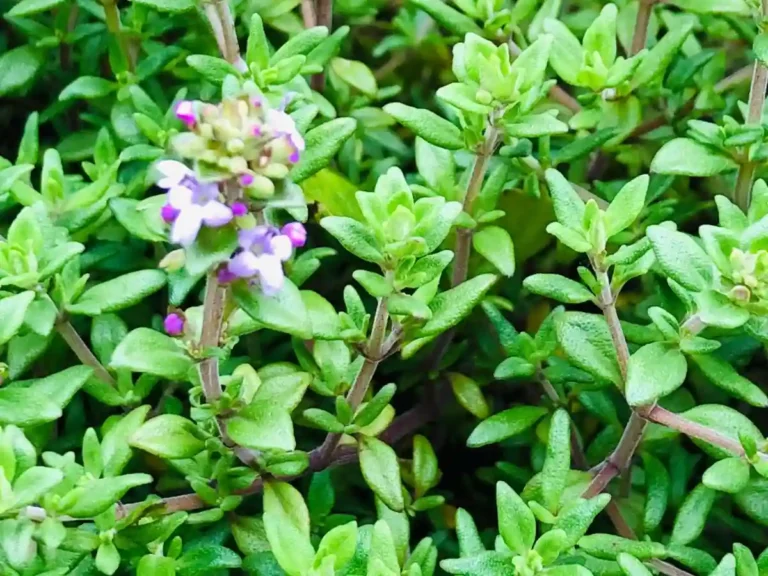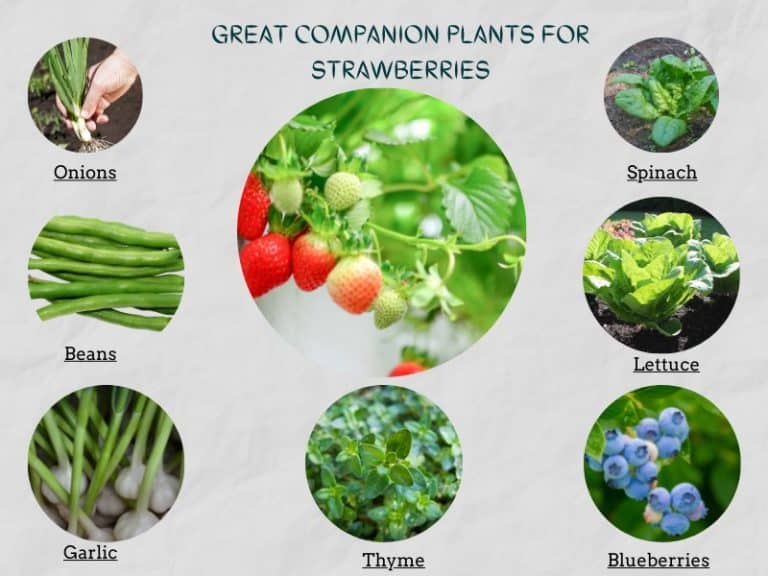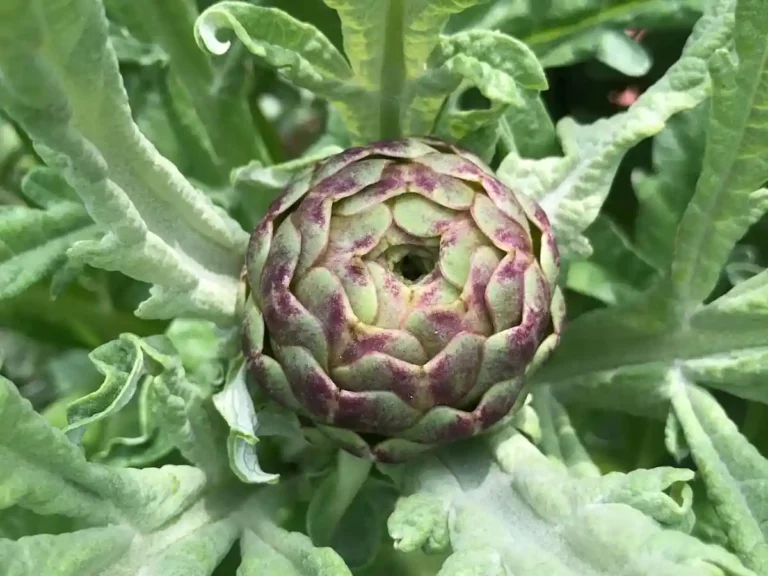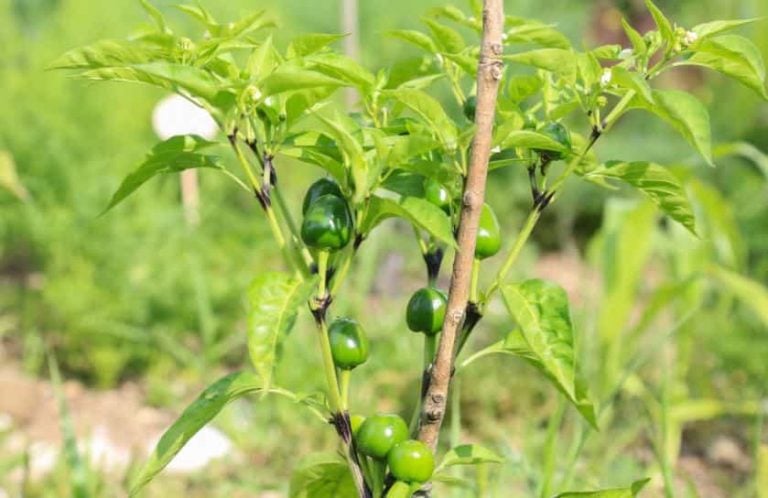11 Companion Plants for Dahlia
Dahlias are showy flowers that will brighten up your summer garden on their own or combined with other plants. When choosing companion plants for dahlias, consider the large amounts of water and space the dahlia plants need.
The best companion plants for dahlias include nasturtiums, coneflower, coriander, bee balm, allium, artemisia, anise, geraniums, comfrey, thyme, roses, ornamental grass, mint, and salvia.
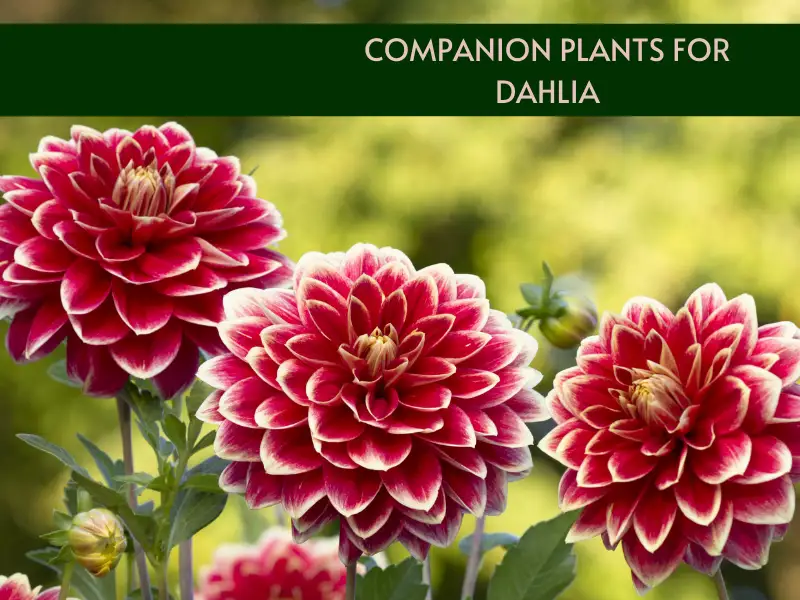
Here are 4 guidelines for choosing companion plants for dahlia:
- Dahlias grow tall, so, short plants that grow in partial shade are ideal companions.
- Avoid competitive feeders as dahlias are heavy feeders.
- Dahlias are suitable for USDA Hardiness Zone 8 or warmer, so make sure you pair them with plants that will survive the same climate.
Best Companion Plants for Dahlia
A good selection of plants to pair with your dahlias will help them resist fungal infections and keep pests away.
Here are 11 plants to pair with dahlias:
| Dahlia companion | Plant | Benefits | Spacing |
|---|---|---|---|
Bee balm |
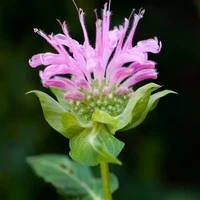 |
Attracts pollinators |
Space 1.5 to 3 feet apart |
Salvia |
 |
Repels slugs, rabbits, deer |
Space 1 to 3 feet apart |
Coneflowers |
 |
Attract pollinators: bees; butterflies, hummingbirds |
Space 12 inches to 3 feet apart |
Comfrey |
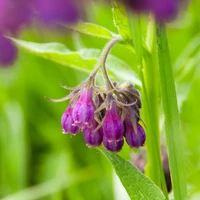 |
Provide cover; repel snails and slugs |
Space rows 3 ft apart |
Geraniums |
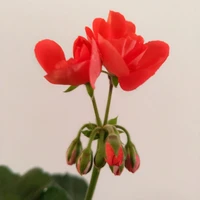 |
Repel Japanese beetles |
Space 12 – 24 inches apart |
Peonies |
 |
Enhance garden colors |
Space 3 to 4 feet apart |
Artemisia |
 |
Repel snails and slugs; balance colors |
Space 12 – 24 inches apart |
1. Bee balm (Monarda)
Bee balm, also called ‘wild bergamot,’ is an annual with colorful flowers that attract bees and butterflies to your garden, which will help the dahlia plants with pollination.
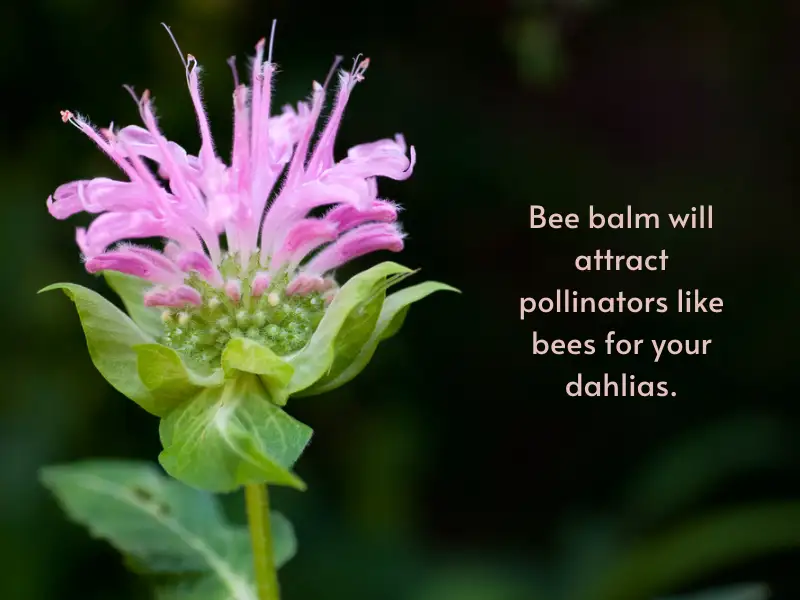
It can grow up to 4 feet tall when planted in moist, well-draining soil and in full sun. Space the plants 1.5 to 3 feet apart and water your plants every ten days during dry seasons. Sprinkle small amounts of all-purpose fertilizer.
2. Nasturtium (Tropaeolum)
Nasturtium plants add beauty with their colored flowers, but they also attract beneficial insects like butterflies, bees, and mantids to the garden. They’ll also repel pests like cucumber beetles and aphids that often penetrate dahlia and suck out the nutrients from the plants.
Nasturtiums are easy-to-grow perennials for zones 9 -11. Plant the seeds in a sunny, well-draining spot in your garden, sowing them an inch deep and 10 to 12 inches apart.
Avoid fertilizing unless the soil is extremely poor, then water them during the growing season to keep them flowering.
3. Salvia (Sage)
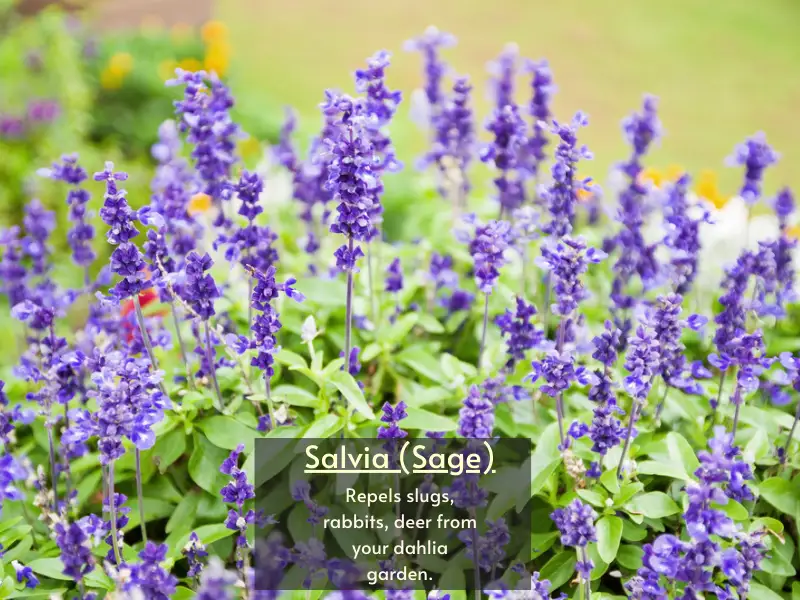
Salvias have brilliantly colored, tall, upright, and spiky flowers that attract beneficial insects like butterflies and bees. They also have aromatic foliage that repels slugs, deer, and rabbits that may want to feed on the dahlia plants.
Just like dahlias, salvias can handle full sun and partial shade. They also need well-draining soil, though they can thrive in any soil.
Salvias do not require frequent watering since they can tolerate drought. These plants have a wide range of sizes, from 1 to 5 feet tall. Space the plants 1 to 3 feet apart depending on the cultivar.
When planting, add equal amounts of general-purpose fertilizer, then water semi-regularly when the top 2 inches of the soil is dry. Always water your salvias lightly even when they are paired with dahlia.
4. Coneflowers (Echinacea)
Coneflowers can be paired with dahlias when you want to attract bees, butterflies, and hummingbirds, which will help with the pollination of dahlias in your garden.
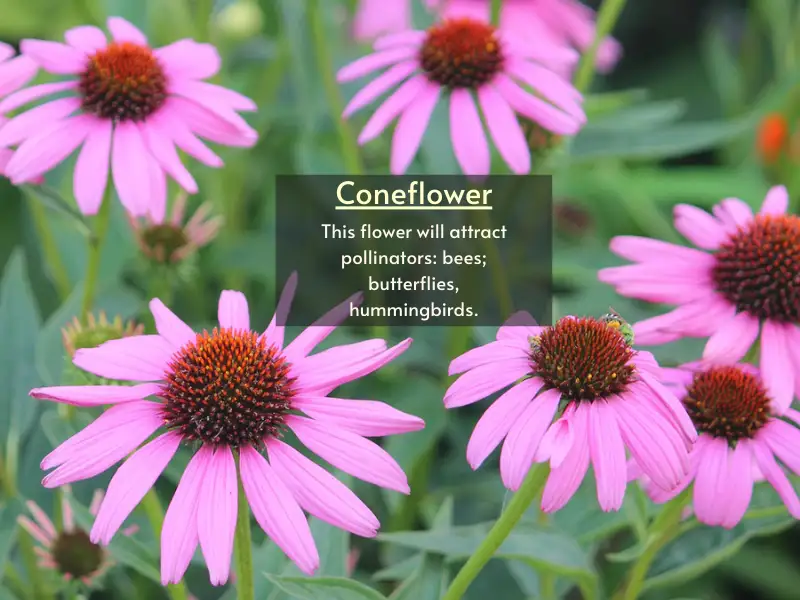
These plants also have spiky foliage that will look beautiful against the lush feminine dahlia plants.
Coneflowers are great companions for dahlia because they must be grown in full sun and well-draining soil. Coneflowers can grow up to 4 feet tall and 20 to 28 inches wide. Space them 12 inches to 3 feet apart.
Apply a slow-release fertilizer sparingly and water lightly when there is no rainfall.
5. Geraniums (Pelargonium)
Geraniums are good companions for dahlia because they repel Japanese beetles. Japanese beetles prefer geraniums to dahlias, so if you plant them near each other, the Japanese beetles will leave dahlias alone.

Geraniums can be grown in containers and as bedding plants. They just need at least four hours of direct sunlight daily. They can also grow well in full sun and also tolerate partial shade.
They vary in height depending on the cultivar. Space the plants 12 to 24 inches apart, then apply a 3 to 4 inches layer of organic matter. Water heavily after planting, then continue to water regularly while allowing the soil to dry out in between.
6. Artemisia (Mugwort)

Artemisia repels snails and slugs in the garden with its pungent aroma. Also, the pale, cloud-like presence of the artemisia plant can balance the colors when your dahlias bloom.
Artemisia requires full sun and well-draining soil to grow well. This perennial can grow up to 3 to 5 feet tall and 2 to 3 feet wide; after the establishment of the plant, water it only when there is prolonged drought.
Artemisia plants do not prefer overly rich soil because too much nitrogen will make the stems leggy.
7. Anise (Pimpinella anisum)
Anise plants attract predatory wasps that deter pests like aphids that want to feed on the dahlias.
Anise is an annual herb that grows in hardy zones 4-11 under full sun and well-drained loam soil. This plant can grow from 18 to 24 inches tall and wide. Sow the seeds 0.4 to 1.2 inches deep, allowing 1.0 to 6.0 inches apart. Ensure you use the type and amount of fertilizer recommended after the soil analysis results.
8. Alliums
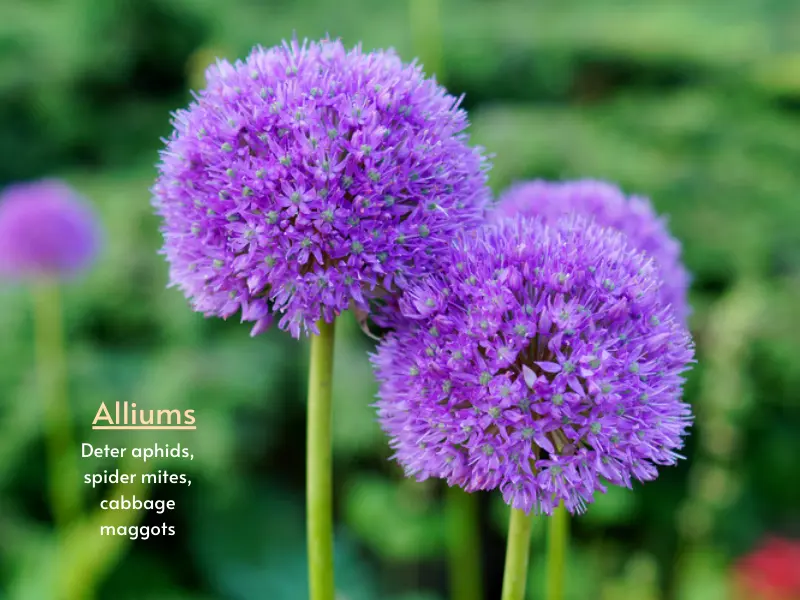
Alliums have strong aroma oils that repel insects that attack your dahlias. They will deter aphids, spider mites, cabbage maggots, and carrot flies from your dahlia plants.
Alliums require well-draining, slightly acidic soil, and full sun to flower well. They are great for mass planting, border gardens, edible gardens, and rock gardens.
The plant can grow up to 20 inches tall under full sun and in rich, sandy loam soil. Plant alliums 5 to 8 inches deep and 6 to 12 inches apart.
Water thoroughly after planting, then reduce to once a week. The allium plants should be fertilized every few weeks with a high nitrogen fertilizer.
9. Comfrey (Symphytum officinale)
Comfrey will make a very excellent cover for the dahlia garden. They also repel snails and slugs.
Comfrey is a hardy perennial that can grow up to 4 feet tall under the full sun but can tolerate partial shade. Space the plants 2 to 4 inches deep in rows 3 feet apart.

Comfrey leaves are high in potassium and thus make excellent fertilizer for the plant. Water the plants if rainfall is scarce.
10. Peonies (Paeonia)
Depending on the cultivar, plant peonies in front or behind dahlias. Peonies will provide pop colors before the dahlias flower, and later on, the peonies’ large foliage will give a beautiful contrast to the dahlia’s multicolored blooms.
Peonies are perennial shrubs suitable for USDA hardiness zones 3 to 9 that can grow up to 3 feet tall. They grow best when exposed to full sun and in well-draining soil.
Plant the peonies in a hole 18 inches deep and about 24 inches wide. Water the plant adequately once every 10 to 14 days and apply a low nitrogen fertilizer during spring when the stems are about 3 inches high.
11. Roses (Rosa)
Pairing roses with dahlias will help attract pollinators like bees and butterflies and repel some insect pests. Roses will add beauty to the garden with their attractive, broad, cup-shaped flowers.
Roses grow rapidly and require at least 6 to 8 hours of direct sunlight. Most cultivars can reach a height of 8 to 15 feet tall.
They do well in loosely held, well-draining soil with adequate organic matter. Use a rose fertilizer or slow-release fertilizer for your roses when planted as companions to dahlias.
To prevent wilting, give your roses a lot of water.
Pairing dahlias in containers
It is possible to companion-plant dahlias in containers especially if you have large pots.
The best companion plants for dahlia in pots include roses, peonies, geraniums, salvia, wormwood, and lilies. These companion plants will help support the dahlia plants, and some also deter pests and help improve the survival rate of the dahlia bulb.
Companion plants for dahlias in containers are mostly woody and shady.
I recommend you use a container that’s at least 12 inches deep with proper drainage to avoid the rotting of the tubers. Place the containers in a cool, sunny spot.
References
- PennState Extension: Dahlias
- University of Georgia Extension: Dahlia Plants



